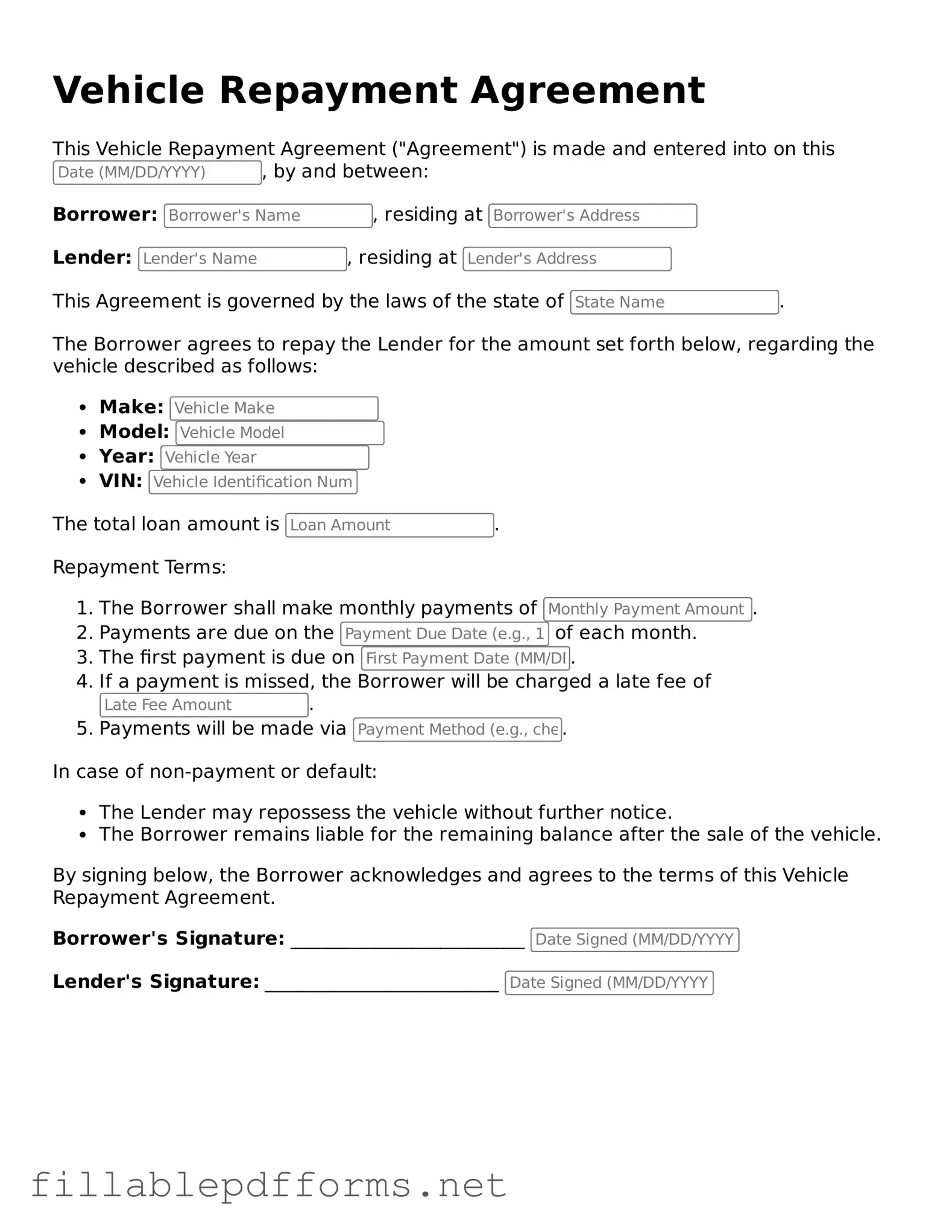Blank Vehicle Repayment Agreement Template
The Vehicle Repayment Agreement form is a legal document that outlines the terms under which a borrower agrees to repay a loan used to purchase a vehicle. This agreement protects both the lender and the borrower by clearly stating the payment schedule, interest rates, and consequences of default. Understanding this form is essential for anyone entering into a vehicle financing arrangement, as it ensures clarity and accountability throughout the repayment process.
Launch Editor Here
